Harewood House, Leeds: Conserving Chippendale furniture
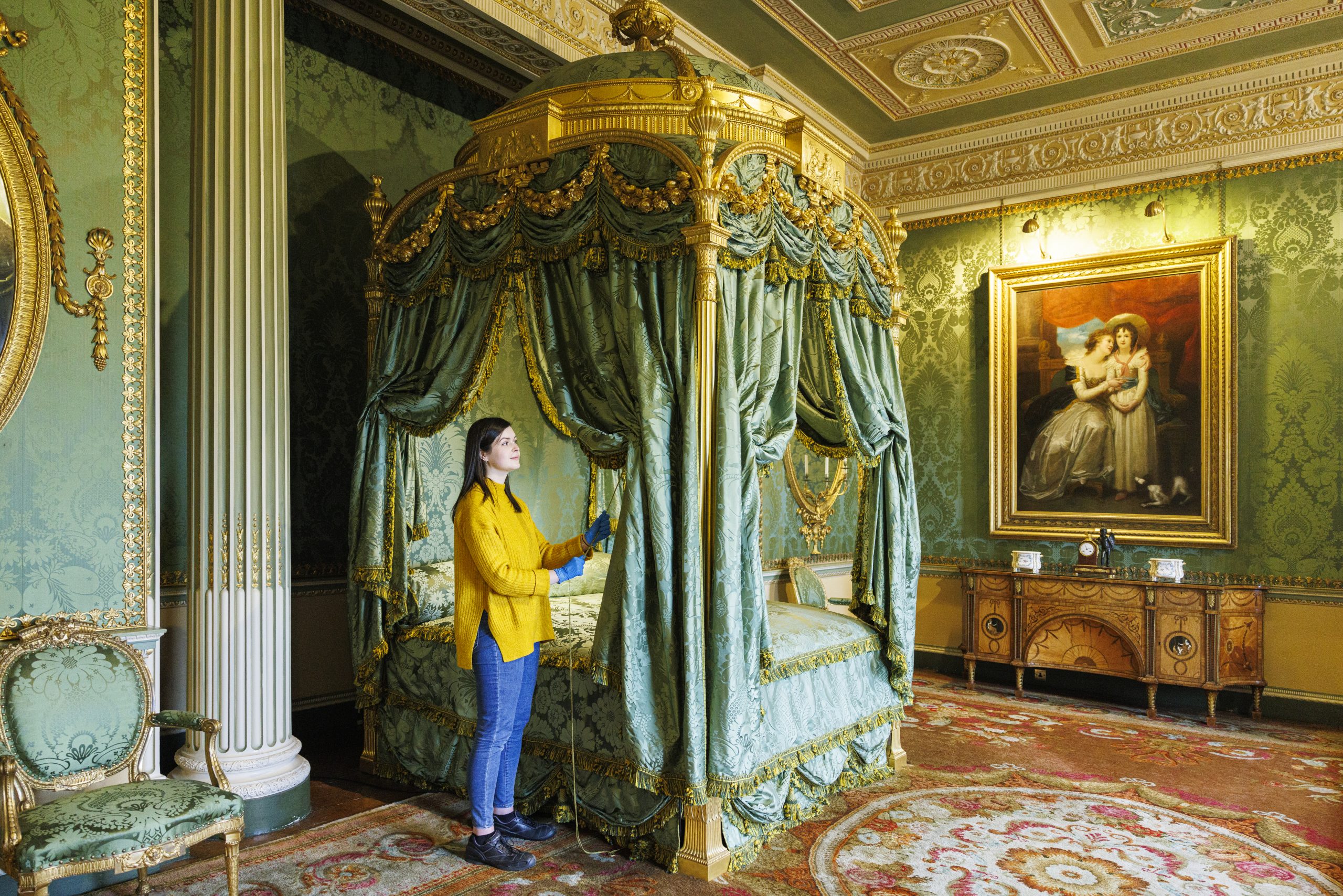
Jeremy Flint meets the people tasked with caring for the historic pieces, including an incredible selection of Chippendale furniture in the collection at Harewood House
Words Jeremy Flint
Harewood House
Harewood House is one of England’s finest country houses, set in the heart of Yorkshire amid a magnificent landscape of sweeping hills and
a serpentine lake created by Lancelot ‘Capability’ Brown.
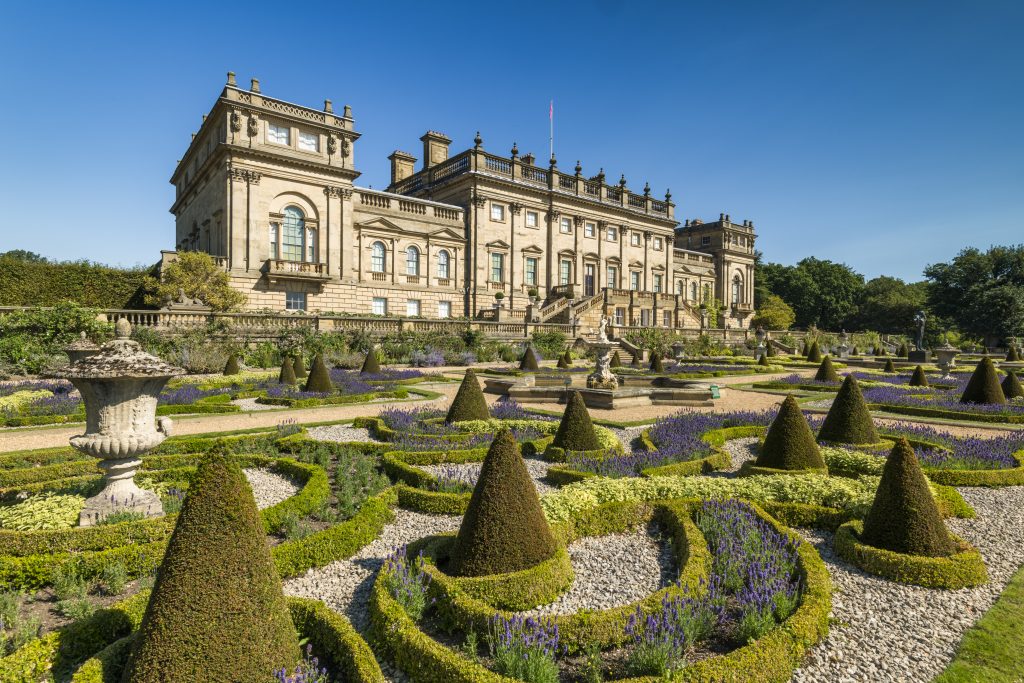
Built in the 18th century, no expense was spared when Edwin Lascelles, a wealthy plantation owner, began building Harewood House in 1759. The building took 11 years to complete, and was built, decorated and furnished by the finest craftsmen in England, from York-born architect John Carr to fashionable Neoclassical interior designer Robert Adam, and England’s greatest furniture maker Thomas Chippendale.
Over the next 250 years, the Lascelles family, later Earls of Harewood, assembled and filled the house with spectacular art and furnishings. The 6th Earl married Princess Mary (daughter of King George V and Queen Mary) in 1922 and moved into Harewood House in 1930, making a number of restorations to both the house and estate, while adding a number of Renaissance masterpiece paintings from the 1500s to the already well-established collections during their residence.
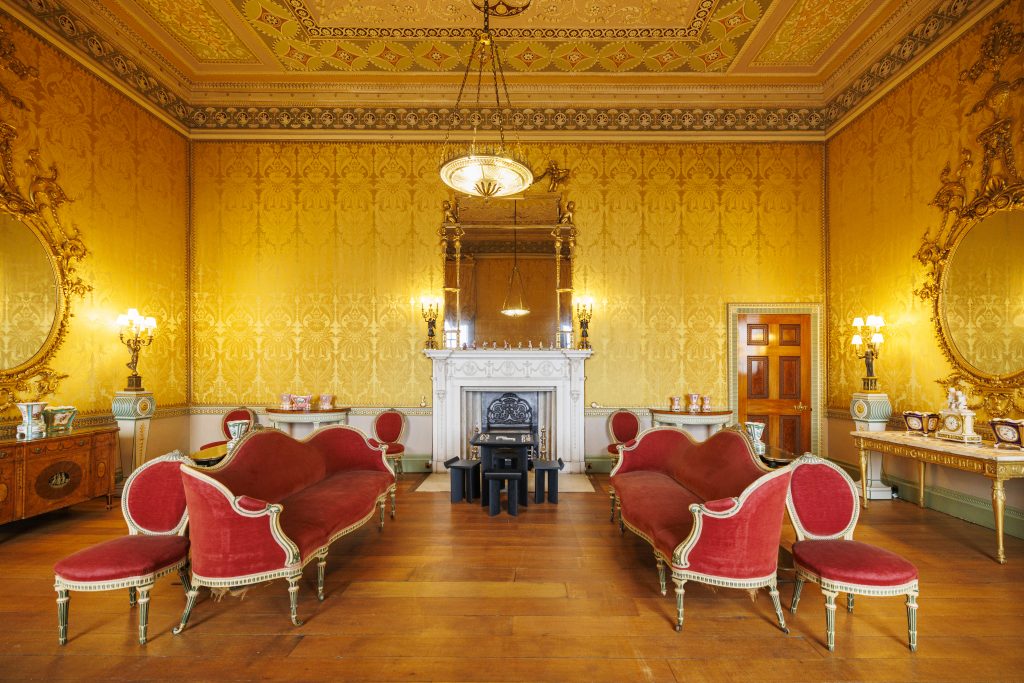
David Lascelles is the 8th and current Earl of Harewood, inheriting the title and estate, following the passing of his father in the summer of 2011. The house remains a spectacular vision of simple, balanced design with classical elegance and symmetry.
Today, Harewood House is home to some of the finest collections in Britain: a treasure trove of exquisite pieces furnish the vast state rooms, from Old Master paintings to clocks, cabinets, furniture, ceramics, mirrors, statues, and books. Historic paintings of the Italian Renaissance, family portraits by Reynolds, Gainsborough and Lawrence, and modern art collected by the current Earl and Countess adorn the walls.
Looking after the Chippendale furniture and historic pieces
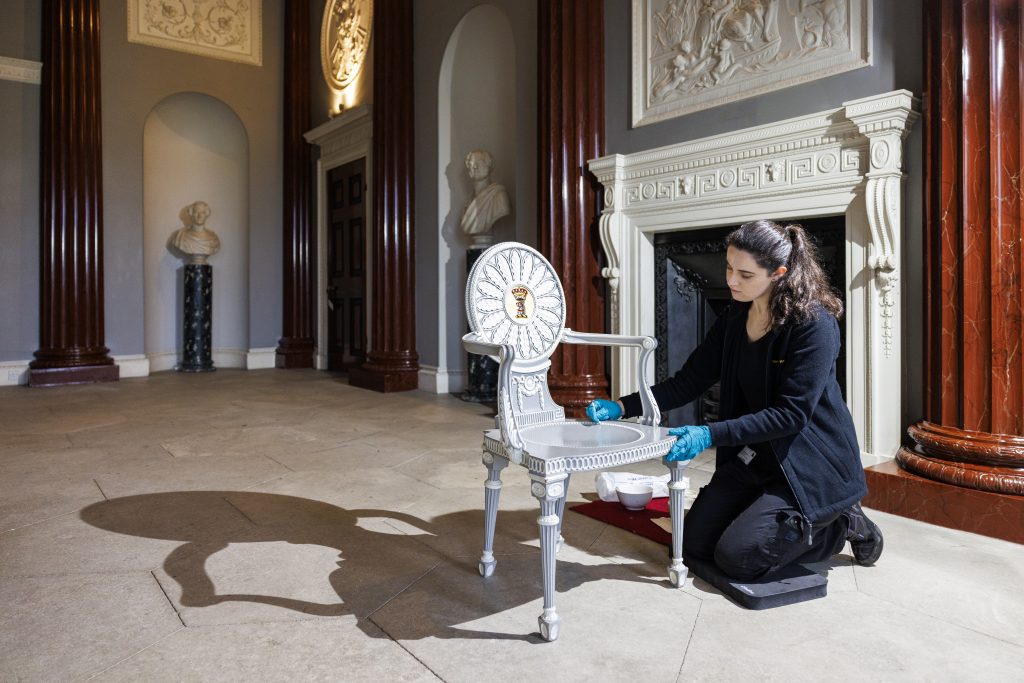
The magnificent collections housed in Harewood House are looked after by a dedicated team who protect these pieces for everyone to enjoy. Niamh Kelly, one of the five members who make up the collection’s conservation team, says the team’s main job is to “look after the collections and any environmental factors that may affect them.”
Sophie Barraclough, another member of the team, adds, “A lot of our work is conservation-based to prevent pieces from needing professional upkeep.”
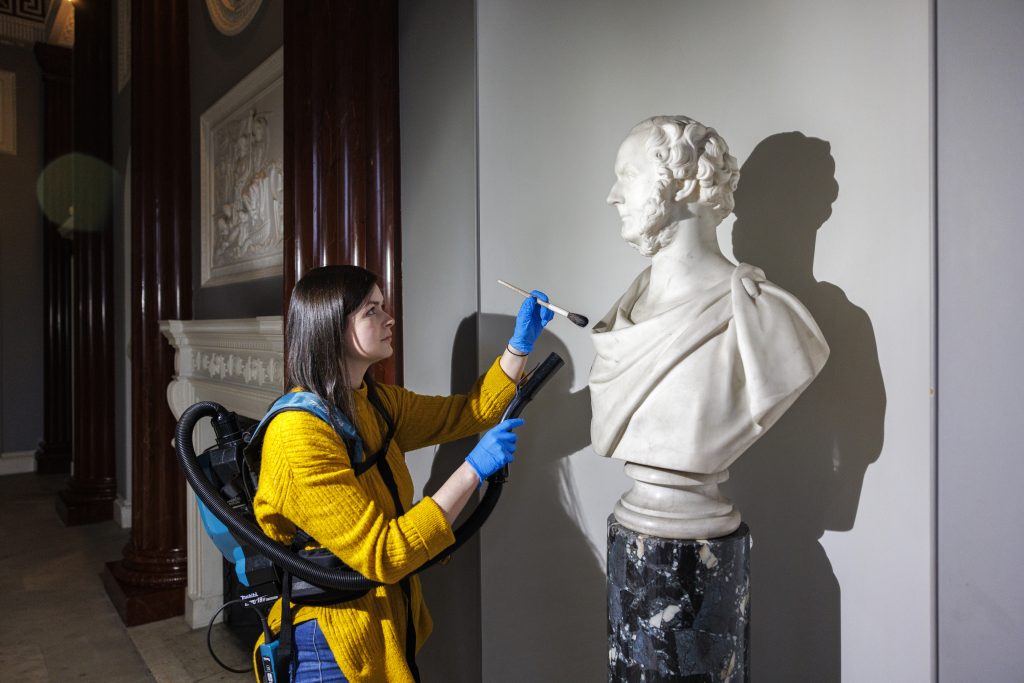
Over the winter, when the house is closed from Monday to Thursday, the team prepares it, ready to reopen for the season in March. “We get on with the ‘annual deep clean’ and spring clean every room from top to bottom, removing cobwebs from the ceiling and cleaning objects and carpets before we open again,” Niamh says.
In the hall, tricky-to-reach objects require the use of scaffolding to clean and condition check them. “With scaffold towers, it’s easier to do a thorough clean when the house is closed so we are not disturbing the visitor route,” Sophie says.
Protecting the precious pieces is a process that requires delicate work and diligent care. Chairs and giltwood are cleaned using cotton buds to make them shine. The Chippendale chair Sophie is cleaning is a chair made by Thomas Chippendale, c.1770, designed to match Robert Adam’s original interior for the hall. The chair displays many of the same decorative motifs used around the room, besides the Lascelles family crest – a muzzled bear.
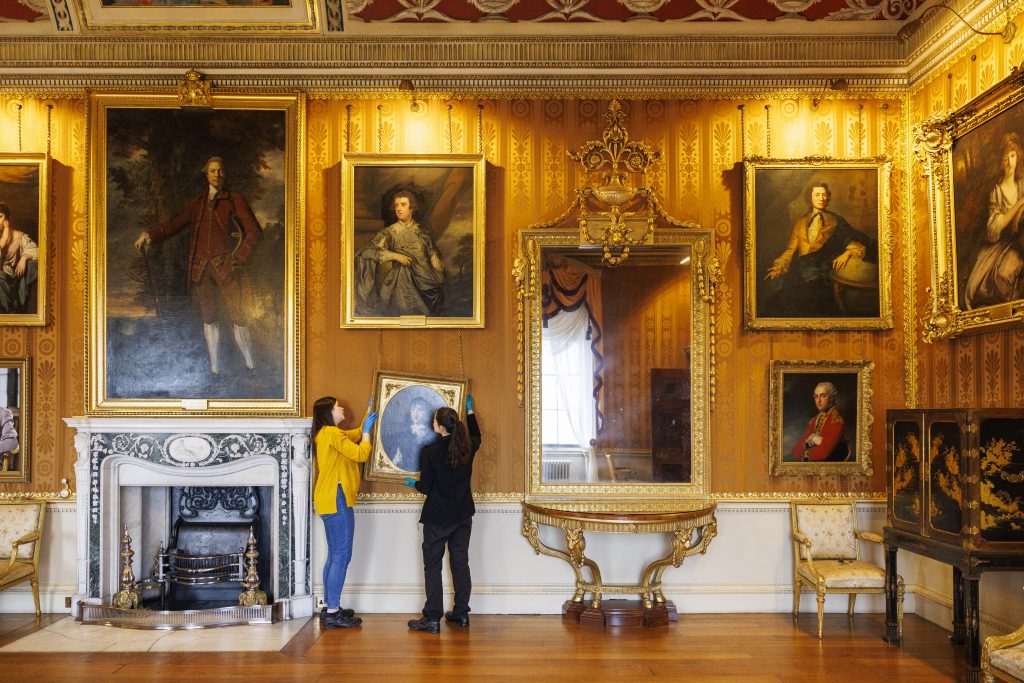
“I use a watered-down rabbit skin glue mixture which cleans and strengthens the giltwood,” Sophie says, describing an old fashioned and effective technique.
Niamh uses a soft pony hairbrush to remove the surface layer of dust from statues and gilded parts and very carefully brushes into a vacuum.
Wax is applied to wood and buffed to apply a protective layer and textiles are given a gentle clean using a museum vac on a very low suction. Some textile items such as curtains and pelmets are so challenging to clean where the fabric has become quite brittle due to light damage and wear and tear that they receive a light dust brush
to preserve the fabric.
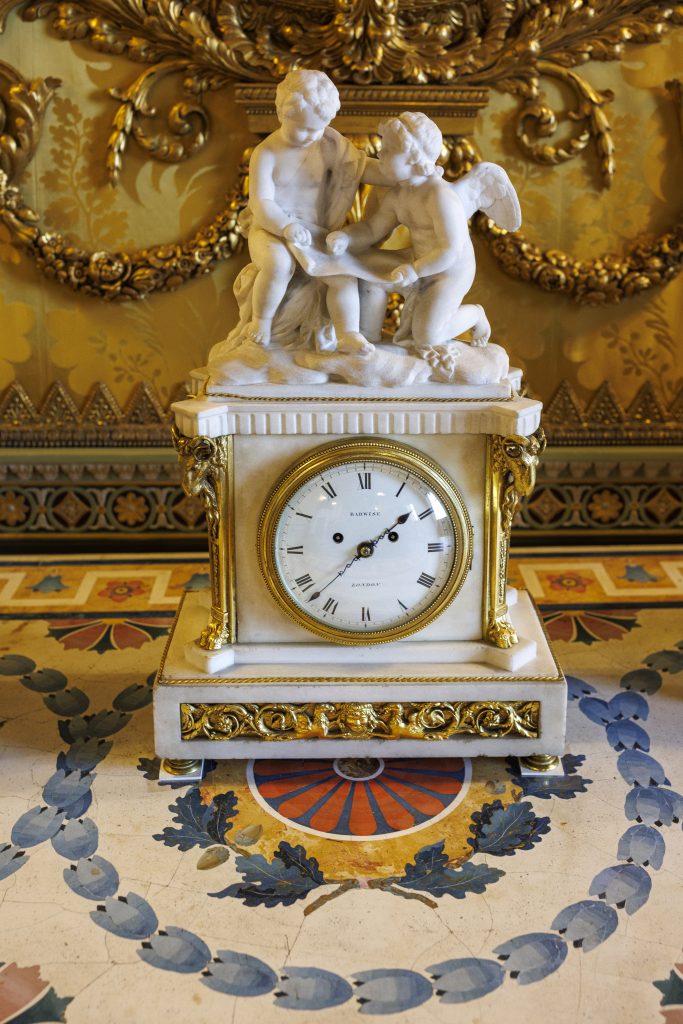
“There is a fine balance to keep between preserving an item in its greatest condition and not overcleaning,” Niamh says. Ceramics are wet-cleaned, and books dusted. “We also do regular pest checks for moths, silverfish and carpet beetles,” Sophie adds.
When caring for Harewood’s collections, Niamh likes to take her time on an object, “It feels like you are contributing to the history of the piece as you are preserving it for future generations,” she says.
In the open season, when Harewood House welcomes the public from late March to October, the conservation care team make sure the house is presentable to visitors and this involves a daily check-up and clean through besides keeping the correct environment for the objects.
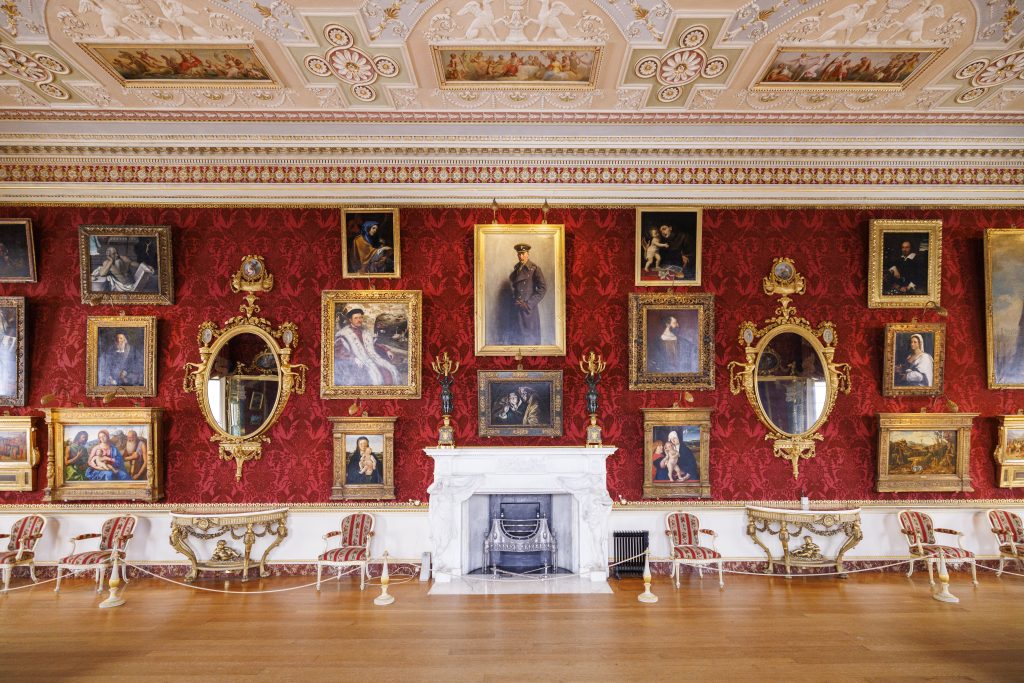
Niamh tells me they do some “conservation in action” by cleaning portable items in front of visitors, which demonstrates the care that goes on behind the scenes.
The team also looks after the collections in storage and file online records of their condition, location, and history. “Princess Mary collected charming owl figurines and we have lots of beautiful textiles from graduation style robes to napkins,” Niamh tells me.
Niamh loves looking after the 10,000 books held within the three beautiful libraries at Harewood, collected by every generation of the Lascelles family. She enjoys restoring a few every year, rebinding the spines and restoring the edges with Japanese paper and leather dressing.
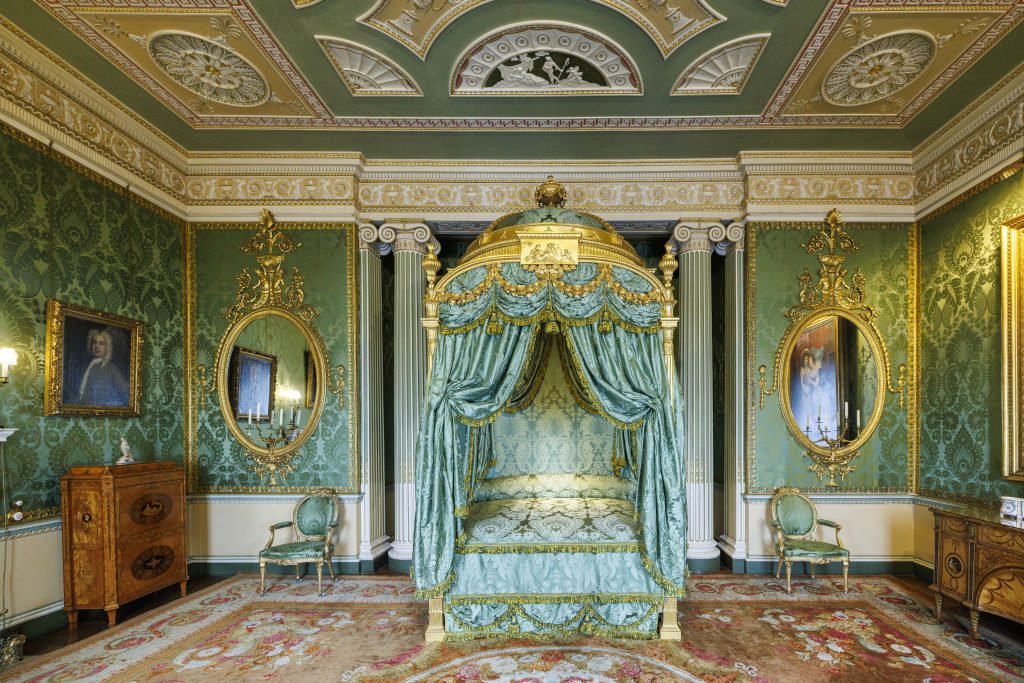
Harewood is home to some of the most outstanding pieces of Chippendale furniture ever produced. This includes the 250-year-old state bed that dazzles visitors, and is one of the most expensive pieces he ever made (costing around £400 in 1773, £75,000 in today’s money).
While an Art Deco statue of Adam, the first man, by Jacob Epstein draws lots of interest on arrival, and most people come to see the Renaissance paintings in the Gallery, the Sèvres collection in the Yellow Drawing Room are among Sophie’s favourite pieces.
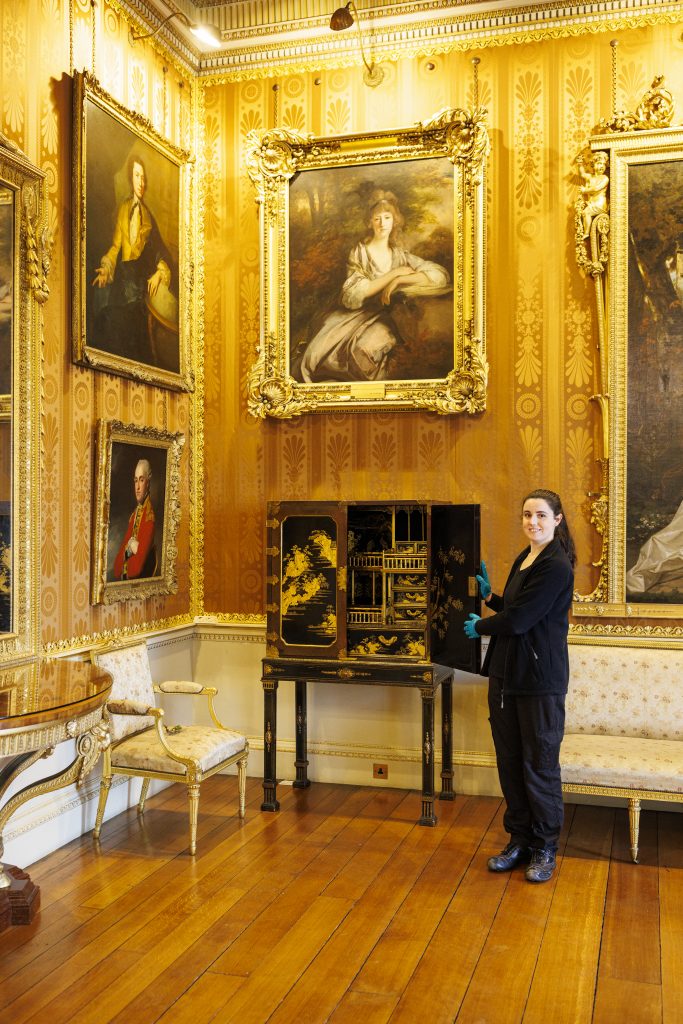
Here, 18th-century porcelain flower vases and pots made in the Sèvres factory in the suburbs of Paris can be admired, while Sophie is also fond of the Chinese embroidered cabinets in the Cinnamon Drawing Room with their intricately detailed interiors.
Niamh’s favourite piece in the collection is Lady Harrington in the Cinnamon Drawing Room, painted by Sir Joshua Reynolds, c.1775.
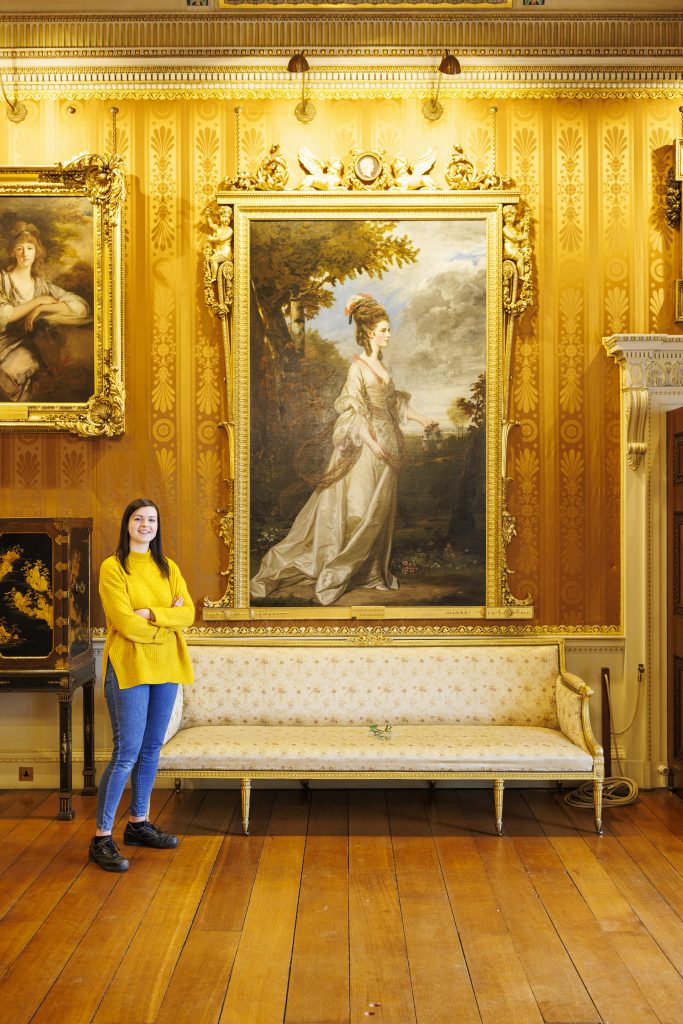
Lady Harrington (known by her maiden name Miss Fleming when the portrait was painted) was the stepdaughter of Edwin Lascelles and sister of Lady Worsley. She is depicted as Aurora, Roman goddess of the dawn. Another favoured piece is a specimen table in the main library from the early 19th century made of segments of marble and stone from Italy and Greece collected from gentlemen on their grand tours. “It’s very colourful, I would have it in my home,” Niamh says.
Roger Stark, house conservation and technical officer, has worked at Harewood for 27 years and helps maintain the status quo of Harewood. He safeguards the collections by erecting scaffolding, cleaning, conserving clocks, re-framing paintings, and repairing giltwood pieces.
“My favourite artefact is an 18th-century giltwood griffin by Thomas Chippendale I restored using fragments of giltwood likely made to decorate the top of a mirror frame,” he says.
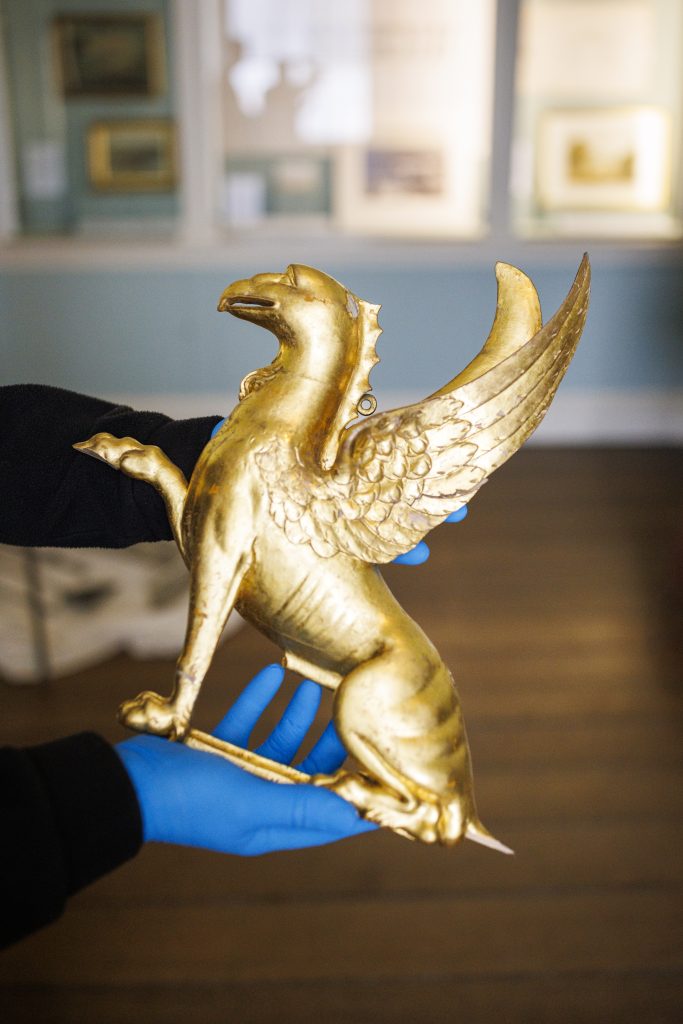
Gilded wood played an important part in the decorative schemes at Harewood: in the 18th century, these surfaces would have glittered spectacularly in candlelight.
Tasked with a variety of jobs, Roger was even asked to dress as a Beefeater in the 2019 Downtown Abbey film.
Besides Downton Abbey, the grand house and its wider estate have starred in Gentleman Jack, and Victoria, and when filming takes place, the care team remain on hand to keep the collections safe.
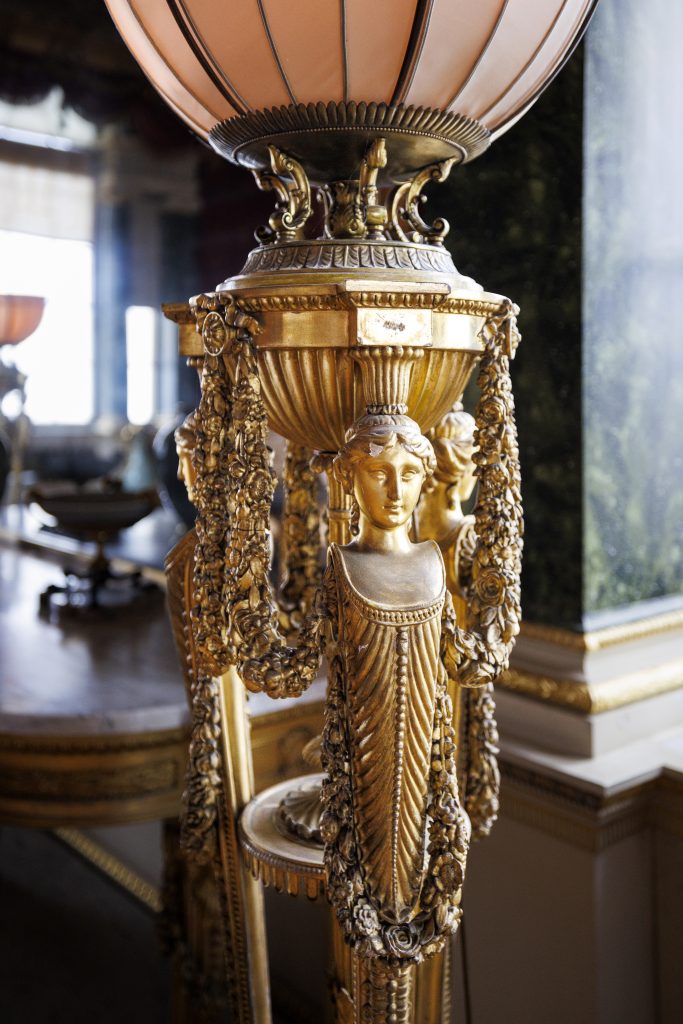
A place of beauty, curiosity, and creativity, with magnificent Georgian interiors and breath-taking gardens, thanks to the care and commitment of Harewood House’s conservation team, the collection can still be enjoyed today, many, many years after it was first amassed. Long may their good work continue.
To find out how you can view Harewood House’s incredible collection in person, go to harewood.org
Read the full feature in our April/May 2024 issue of Discover Britain, available to buy from 1 March here.
Read more from Discover Britain:



